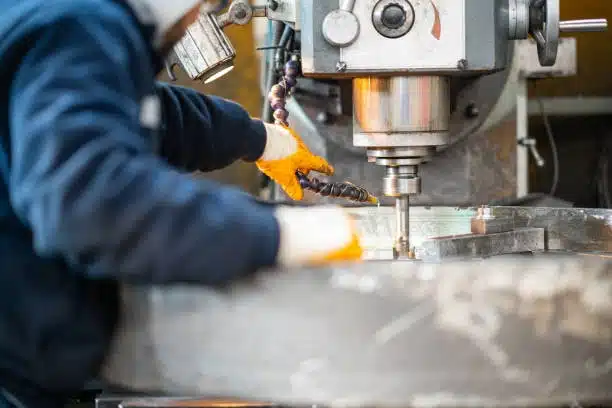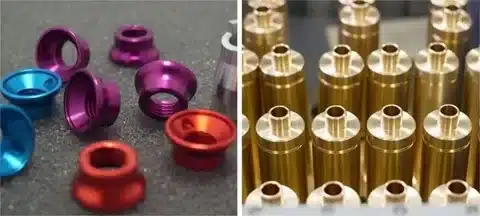Introduction to Drilling Machining
Drilling machining stands as one of the fundamental operations in modern manufacturing. This essential process involves creating cylindrical holes in various materials using specialized cutting tools. The significance of drilling extends across industries, from aerospace and automotive to medical devices and consumer electronics. As manufacturing demands grow increasingly precise, understanding the intricacies of drilling machining becomes paramount for engineers, machinists, and manufacturing professionals alike.
The Evolution of Drilling Technology
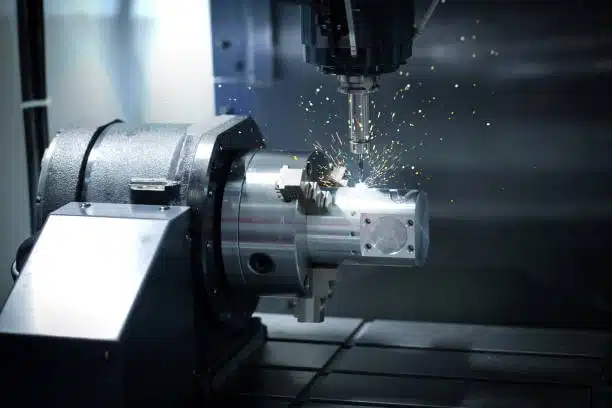
The journey of drilling technology traces back to ancient civilizations, where primitive hand drills marked the beginning of this crucial fabrication method. Over centuries, drilling evolved from manually operated tools to steam-powered machinery during the Industrial Revolution. The 20th century witnessed the advent of electrically powered drilling machines, followed by the development of numerical control systems. Today’s computer numerical control (CNC) drilling represents the culmination of this technological progression, offering unprecedented levels of precision, efficiency, and automation.
Fundamental Principles of Drilling Operations
At its core, drilling relies on the combined actions of a rotating cutting tool, rotational cutting, and axial force. The cutting edges on drill bits remove material through shearing action while flutes channel the resulting chips away from the cutting zone. Proper drilling requires balancing several parameters: rotational speed, feed rate, cutting fluid application, and tool selection. Understanding these principles enables machinists to achieve optimal results while prolonging tool life and maintaining dimensional accuracy.
Types of Drilling Machines and Their Applications
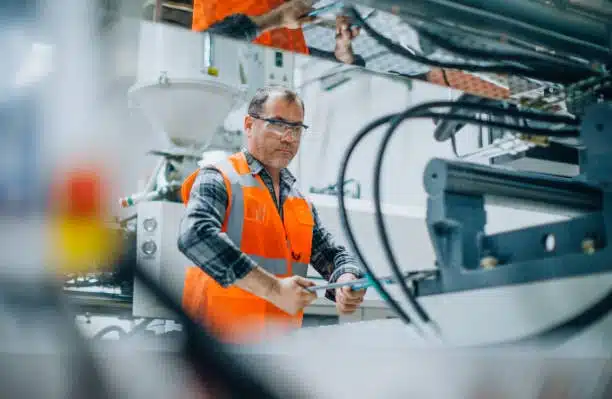
Benchtop Drill Presses
Benchtop drill presses provide versatility for small-scale operations. These compact machines offer adequate power for light-duty applications while occupying minimal floor space. Particularly popular in maintenance shops, educational facilities, and small manufacturing operations, benchtop drill presses balance affordability with functionality for basic drilling requirements.
Floor-Standing Drill Presses
Floor-standing models and multiple spindle drilling machine deliver enhanced capacity and power compared to their benchtop counterparts. These machines accommodate larger workpieces and provide greater drilling depths. Their robust construction enables processing of harder materials and larger diameter holes, making them suitable for medium-duty industrial applications and fabrication shops.
Radial Arm Drilling Machines
Radial arm drills feature a movable spindle mounted on a horizontal arm, allowing flexible positioning of the drilling head relative to the workpiece. This design proves advantageous when working with large, cumbersome parts that would be difficult to reposition. The extended reach and adjustability make radial arm machines invaluable for shipbuilding, heavy equipment manufacturing, and structural fabrication.
Multi-Spindle Drilling Machines
Multi-spindle drilling machines simultaneously create multiple holes in a single operation. By dramatically reducing cycle times, these specialized machines serve high-volume production environments where throughput is critical. Automotive manufacturing and appliance production particularly benefit from multi-spindle drilling capabilities.
CNC Drilling Centers
Computer numerical control has revolutionized drilling operations through automated precision and repeatability. CNC drilling centers execute complex hole patterns with minimal operator intervention, reducing human error while maintaining tight tolerances. These sophisticated machines integrate seamlessly into modern digital manufacturing ecosystems, supporting Industry 4.0 initiatives across sectors.
Essential Drill Bit Geometries
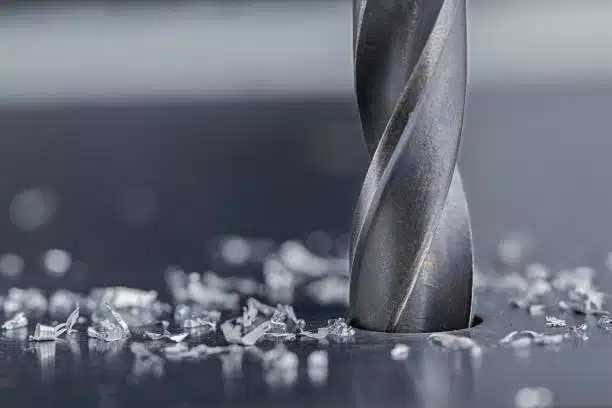
Twist Drills
The iconic twist drill and its drill body represent the most common bit geometry, featuring helical flutes that facilitate chip evacuation. Point angles typically range from 118° for general-purpose applications to 135° for harder materials. The standard twist drill serves as the workhorse in most drilling operations, balancing versatility with reasonable tool life.
Step Drills
Step drills incorporate multiple diameters on a single tool, enabling progressive hole enlargement without changing bits. This design and machining process proves particularly efficient for sheet metal work, eliminating the need for pilot holes and subsequent operations. The stepped configuration also reduces burr formation at breakthrough points, improving overall hole quality.
Spade Drills
Spade drills consist of replaceable cutting inserts mounted on holder bodies. This modular design offers cost efficiency for large-diameter holes, as only the insert requires replacement when worn. The simplified geometry facilitates internal cooling channels, enhancing performance in deep-hole applications where heat dissipation presents challenges.
Gun Drills
Specialized for producing deep, straight holes, gun drills feature asymmetric cutting edges and internal cooling channels. The distinctive geometry controls chip formation and evacuation even at extreme depth-to-diameter ratios exceeding 100:1. Critical applications in firearm manufacturing, hydraulic components, and precision instrumentation rely on gun drilling technology.
Indexable Drills
Modern indexable drills employ replaceable carbide inserts, allowing quick replacement of worn cutting edges without discarding the entire tool body. This approach reduces tooling costs while maintaining dimensional consistency. Advanced insert geometries optimize chip formation and evacuation, particularly beneficial when machining difficult materials like heat-resistant superalloys.
Material Considerations in Drill Selection
Drilling Ferrous Metals
Iron-based materials present specific challenges due to their strength and chip formation characteristics. High-speed steel (HSS) drills suffice for many mild steel applications, while cobalt-enriched HSS offers enhanced heat resistance for harder steels. Carbide tools become necessary when dealing with hardened steels, providing the edge retention needed for abrasive conditions.
Machining Non-Ferrous Alloys
Aluminum, copper, and their alloys require different drill geometries to prevent galling and built-up edge formation. Higher helix angles improve chip evacuation and chip removal , while polished flutes reduce friction. When drilling aluminum specifically, tools with enhanced lubricity coatings minimize adhesion issues common with this sticky material.
Drilling Composites and Engineered Materials
Fiber-reinforced composites demand specialized drilling approaches to prevent delamination, fiber pullout, and thermal damage. Point geometries with specialized entrance and exit features mitigate these risks. Carbon fiber composites particularly benefit from diamond-coated tools that resist the highly abrasive nature of the reinforcement fibers.
Working with Plastics
Thermoplastic and thermoset materials require careful drilling to prevent melting, cracking, or chipping. Lower cutting speeds combined with sharp tools and effective cam software minimize heat generation. Special “plastic-cutting” drill points with reduced rake angles prevent the material from climbing up the flutes during machining operations.
Challenges of Exotic Materials
Titanium alloys, Inconel, and other exotic materials present extreme challenges due to their work hardening properties, low thermal conductivity, and chemical reactivity. These materials often necessitate specialized coatings and geometries coupled with precisely controlled drilling parameters and multiple spindles for abundant cooling to achieve acceptable tool life and hole quality.
Critical Drilling Parameters
Cutting Speed Optimization
Cutting speed, measured in surface feet per minute or meters per minute, represents the velocity at which the drill bit’s outer edge traverses the workpiece material. Optimizing this parameter balances material removal rates against tool wear. Modern machining handbooks provide starting recommendations, though real-world adjustments often prove necessary based on specific conditions.
Feed Rate Selection
Feed rate determines the axial distance the drill advances per revolution. Insufficient feed causes rubbing rather than cutting, accelerating tool wear, while excessive feed risks drill breakage or hole quality issues. The optimal feed rate for the drilled component depends on material properties, drill diameter, and desired surface finish requirements.
Depth-to-Diameter Ratio Limitations
As hole depth increases relative to diameter, challenges multiply exponentially. Deep holes encounter chip evacuation difficulties, cooling limitations, and increased drill deflection risks. Special techniques such as peck drilling (intermittent retraction) become necessary when depth-to-diameter ratios exceed standard operating parameters.
Coolant Application Strategies
Proper coolant application serves multiple critical functions: temperature regulation, lubrication, and chip evacuation. Through-tool cooling, where coolant flows through the tool holder’s internal channels in the drill, provides superior performance for deep holes compared to flood cooling. High-pressure coolant systems further enhance chip breaking and evacuation in challenging applications.
Advanced Drilling Techniques
Deep Hole Drilling Methodologies
Deep hole drilling requires specialized approaches to maintain straightness and dimensional accuracy. Techniques such as BTA (Boring and Trepanning Association) drilling and ejector drilling systems provide solutions for extreme depth-to-diameter ratios, utilizing specialized tooling with pressure-balanced cutting heads and sophisticated chip management systems.
High-Speed Drilling Considerations
High-speed drilling amplifies both productivity and technical challenges. Successful implementation requires premium tool materials, rigid machine setups, and enhanced cooling systems. Dynamic stability becomes increasingly critical as rotational speeds increase, necessitating careful attention to tool balancing and runout minimization.
Micro-Drilling Technology
Drilling holes below 1mm diameter presents unique challenges in tool rigidity, runout control, and chip evacuation. Micro-drilling operations often employ specialized machines with high-frequency spindles and precision workholding systems. Advanced monitoring technologies help detect the subtle indicators of tool wear or impending failure in these delicate operations.
Orbital Drilling Processes
Orbital drilling combines circular interpolation with axial feed, creating holes through a helical tool path rather than direct plunging. This approach reduces thrust forces, improves chip evacuation, and allows a single tool to produce various hole diameters. Aerospace applications particularly benefit from orbital drilling’s ability to minimize delamination in composite materials.
Common Drilling Defects and Remedies
Drill Wandering and Prevention
Initial drill wandering creates holes that deviate from intended positions. Prevention strategies include using center drills or spot drills to establish starting points, ensuring proper tool sharpness, and maintaining rigidity in the tool-workpiece system. Pilot holes offer another effective approach for larger diameter drilling operations.
Managing Chip Formation
Problematic chip formation can lead to poor surface finish, reduced tool life, and even catastrophic failure. Different chip types—from ideal “6” or “9” shaped chips to problematic ribbon or needle forms—indicate specific cutting condition issues. Adjusting feed rates, speeds, and tool geometries helps achieve optimal chip formation and evacuation.
Addressing Hole Straightness Issues
Maintaining hole straightness, particularly in deep drilling operations, requires systematic approach. Tool rigidity, proper support, and pilot hole strategies all contribute to straighter results. For critical applications, specialized techniques like gun drilling or BTA processes might become necessary to meet stringent straightness requirements.
Mitigating Burr Formation
Burrs—unwanted material protrusions at hole entrances and exits—create both aesthetic and functional problems. Minimizing their formation involves optimizing cutting parameters, utilizing specialized tool geometries, and implementing techniques such as back-spotfacing. When prevention proves insufficient, secondary deburring operations become necessary.
Thermal Damage Control
Excessive heat generation during drilling can cause microstructural changes, dimensional issues, and reduced service life of machined components. Controlling thermal damage involves optimizing cutting parameters, ensuring adequate cooling, and implementing appropriate drilling cycles for difficult materials or geometries.
Toolholding and Workholding Considerations
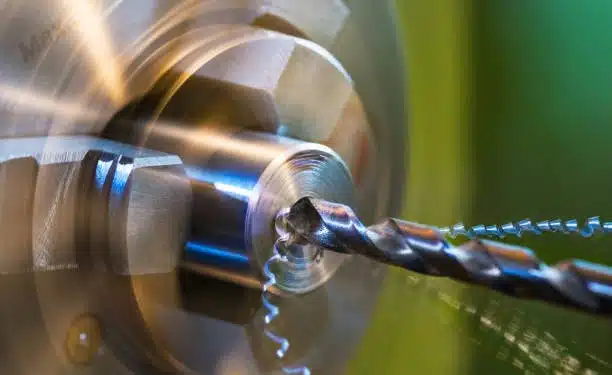
Toolholder Selection Criteria
Toolholding systems significantly impact drilling performance through their influence on runout, rigidity, and vibration damping characteristics. Options range from traditional drill chucks to more precise collet holders and hydraulic or heat-shrink systems. Critical applications may warrant premium toolholding solutions that minimize runout and maximize gripping force.
Workholding for Drilling Operations
Secure workholding prevents movement during drilling operations while maintaining reference datum relationships. Standard vises, clamps, and fixtures serve many applications, while vacuum systems offer advantages for thin materials or finished surfaces. Custom fixturing for stationary workpiece often becomes necessary for complex parts or high-volume production scenarios cnc drilling process
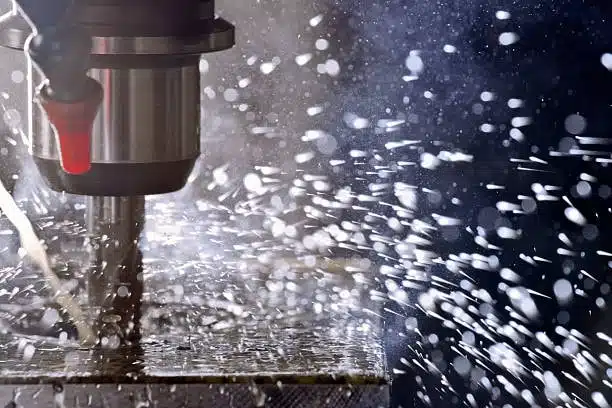
Alignment and Positioning Strategies
Achieving precise hole positioning requires systematic approach to alignment and setup. Edge finders, dial indicators, and increasingly, probe systems establish critical reference positions. For production environments, dedicated fixtures with hardened bushings or CNC systems with vision-assisted positioning enhance repeatability and throughput cnc drilling machine.
Quality Control in Drilling Processes

Dimensional Inspection Methods
Measuring drilled hole dimensions accurately supports quality assurance efforts. Common tools include pin gauges, coordinate measuring machines (CMMs), and increasingly, optical measurement systems upright cnc drill press. Advanced applications may employ specialized bore gauges with electronic indicators to detect subtle variations in diameter or roundness cnc machining.
Surface Finish Evaluation
Surface finish within drilled holes affects both appearance and functional characteristics such as fluid flow, thread engagement, and fatigue resistance. Profilometers with specialized extensions access internal surfaces to quantify roughness parameters. Visual inspection using borescopes provides qualitative assessment when numerical measurement proves impractical.
Positional Accuracy Verification
Verifying hole positions relative to part datums ensures assembly functionality. Coordinate measuring machines excel at this task, though templates and functional gauges serve many applications. Statistical process control methodologies help maintain positional accuracy within established tolerance bands over production runs.
Drilling Economics and Productivity
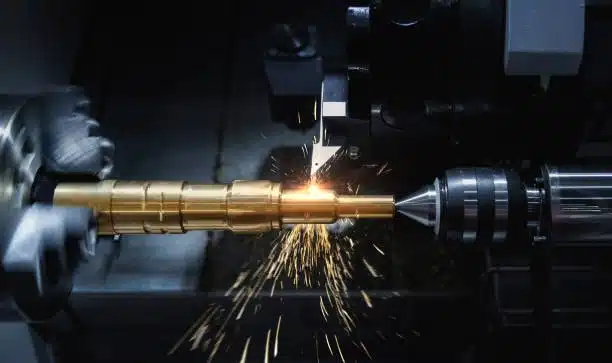
Tool Cost Management
Managing drilling tool costs extends beyond purchase price to consider life-cycle expenses. Regrinding policies, insert indexing schedules, and tool management systems all impact overall economics. Advanced tracking systems monitor tool usage patterns to optimize replacement cycles and identify improvement opportunities.
Cycle Time Reduction Strategies
Reducing non-cutting time significantly impacts productivity in drilling operations. Quick-change tooling systems, optimized drilling cycles, and multi-function tools contribute to leaner processes. For high-volume production, dedicated fixtures allowing simultaneous loading/unloading during machining operations maximize spindle utilization.
Evaluating Process Capability
Process capability analysis quantifies how consistently a drilling process can meet specification requirements. Capability indices such as Cp and Cpk provide standardized metrics for comparison and improvement tracking. Regular capability studies highlight opportunities for process refinement or tooling upgrades to enhance quality outcomes.
Industry Applications of Drilling Technology
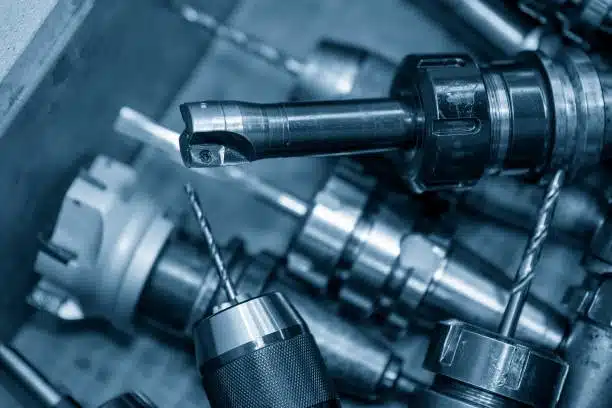
Aerospace Machining Requirements
Aerospace drilling applications demand exceptional accuracy, surface integrity, and documentation. Materials like titanium alloys and composites present unique challenges requiring specialized tools and techniques. Automated drilling systems with real-time monitoring capabilities increasingly handle these demanding applications, ensuring compliance with stringent industry requirements.
Automotive Production Drilling
High-volume automotive manufacturing relies on efficient, cost-effective drilling solutions. Transfer lines and flexible manufacturing systems incorporate multiple drilling operations with minimal cycle times. Electric vehicle production introduces new drilling challenges related to battery components and lightweight structural materials cnc drilling operations.
Medical Device Manufacturing
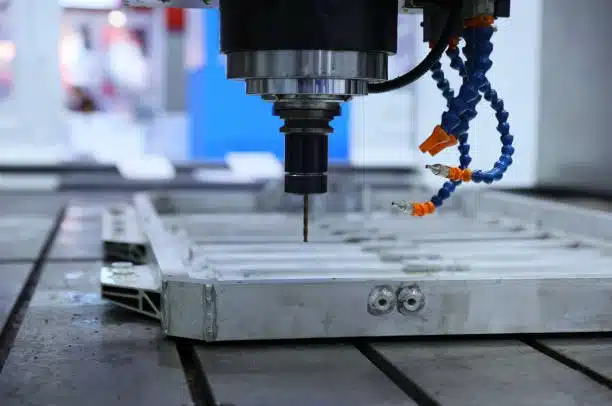
Medical implants and instruments require exceptional surface finish and burr-free holes that may contact human tissue. Biocompatible materials like titanium and specialized polymers present unique machining challenges. Clean manufacturing environments with stringent process controls ensure drilling operations meet regulatory requirements for these critical applications.
Energy Sector Applications
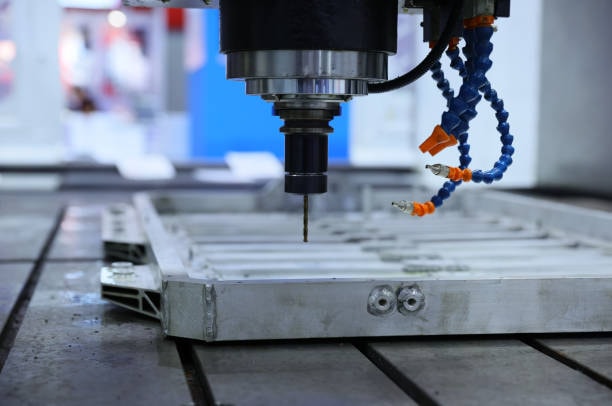
The energy sector utilizes drilling technology for components ranging from turbine housings to heat exchangers. Large-scale parts with demanding tolerance requirements typify many oil, gas, and renewable energy applications. Exotic materials and harsh operating environments drive the development of specialized drilling solutions for this sector.
Future Trends in Drilling Machining

Automation and Robotics Integration
Robotic drilling systems increasingly handle applications previously requiring manual intervention. Adaptive control systems monitor cutting forces and adjust parameters in real-time to optimize performance. Collaborative robots bring automation to small-batch production environments previously considered impractical for robotic implementation.
Smart Tooling Developments
Next-generation drilling tools incorporate sensors and connectivity features enabling real-time condition monitoring. Tool wear prediction algorithms optimize replacement schedules to prevent quality issues. Digital twins of drilling processes simulate performance before physical implementation, accelerating development cycles.
Sustainable Drilling Practices
Environmental considerations drive development of more sustainable drilling processes. Minimum quantity lubrication (MQL) and dry machining technologies reduce or eliminate traditional flood coolants. Tool materials and coatings optimized for specific applications minimize energy consumption while extending tool life.
Digitalization of Drilling Processes
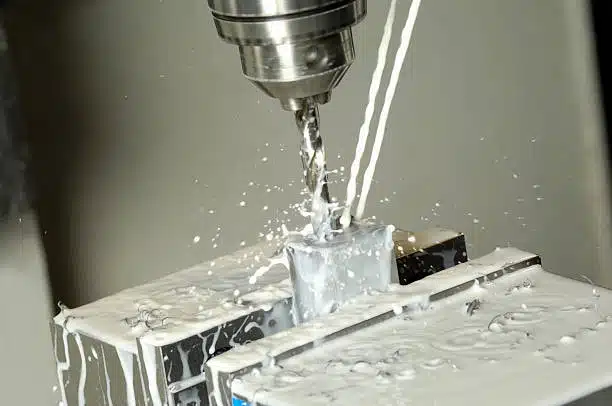
Digital transformation revolutionizes drilling operations through comprehensive data capture and analysis. Cloud-connected machines share performance data across global manufacturing networks to identify best practices. Machine learning algorithms continuously refine drilling parameters based on accumulated process knowledge, creating self-optimizing systems.
Conclusion
The science and art of precision drilling represent a critical cornerstone of modern manufacturing technology. From the simplest bench drill to sophisticated multi-axis CNC systems, drilling operations enable countless products we rely on daily. The continued advancement of drilling technology promises further improvements in productivity, quality, and sustainability. By mastering the principles outlined in this article, manufacturing professionals can optimize drilling processes to meet increasingly demanding requirements across diverse industrial applications.

